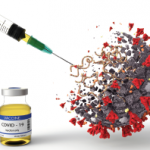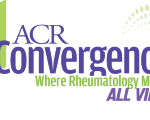SARS-CoV-2’s chief routes of transmission are large, respiratory droplets that fall within a few feet of being expelled by an infected person, but long-lasting aerosol droplets may cause infection, too, he said. Other bodily fluids, such as stool, blood, semen and ocular secretions, are far less important transmission sources. Fundamental prevention steps include universal mask wearing, physical distancing, avoiding indoor gatherings, conducting more activities outdoors and frequent handwashing.
“If those five public health measures were adhered to universally and consistently across the country, it is clear—from our previous experiences with other nations and even regions of our own country—it is clear that we would not be having the surging of cases that we are currently seeing,” Dr. Fauci said.
Protean clinical manifestations of COVID-19 include fever, cough and fatigue, and less commonly, anorexia, shortness of breath and myalgias. Some patients report loss of smell and taste preceding the onset of respiratory symptoms, he said. According to data from 44,672 confirmed cases in China, 81% of patients had mild to moderate disease, 14% had severe illness and 5% were critical, with a fatality rate of 2.3%, although this varies. However, up to 40% of infected individuals are asymptomatic, he said.4
Multiple Risk Factors
Older adults and people of any age with certain underlying medical conditions, including cancer, chronic kidney disease, chronic obstructive pulmonary disorder (COPD), type 2 diabetes, cardiovascular disease, smoking and obesity, also are at higher risk of severe COVID-19. Dr. Fauci mentioned obesity is a paramount concern. Other possible risk factors for severe illness are use of corticosteroids or immunosuppressant medications, hypertension, pulmonary fibrosis, liver disease and being overweight, if not obese, he said. Manifestations of severe COVID-19 include hyperinflammation, neurologic disease, acute respiratory distress syndrome, cardiac dysfunction, hypercoagulability and acute kidney injury.
Another serious, rare manifestation of particular interest to rheumatologists “is a curious multi-system inflammatory syndrome first described in children, resembling Kawasaki disease, but this is also now seen in adults. There have been 800 to 1,000 cases reported globally, and 80% required ICU care, 20% required mechanical ventilation, 71% had involvement of at least four organ systems and 73% had no underlying medical conditions,” he said.6
There is a higher incidence of infections among racial and ethnic minority populations, with the highest rates in Hispanic/Latino, American Indian/Alaska Native and non-Hispanic Black communities, which may be due to higher proportions of these individuals working in jobs with high risk of exposure to SARS-CoV-2 or increased incidence of comorbidities that increase risk of severe COVID-19 disease, he said.7



